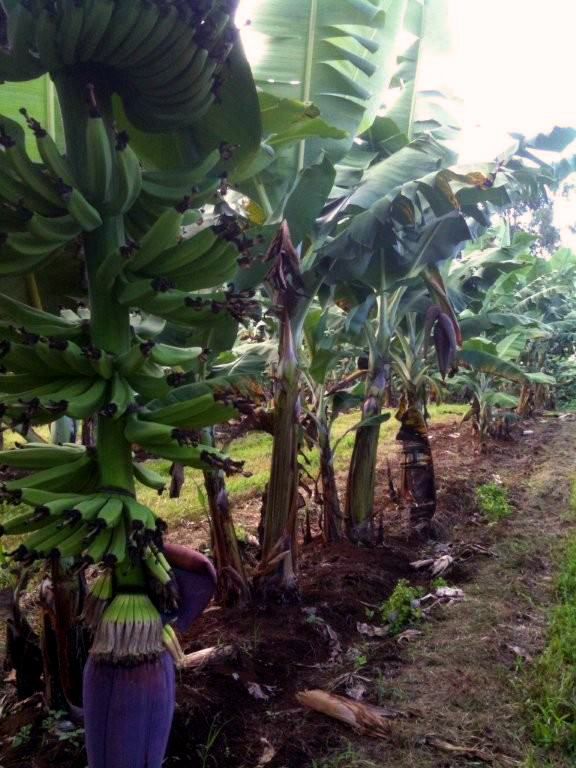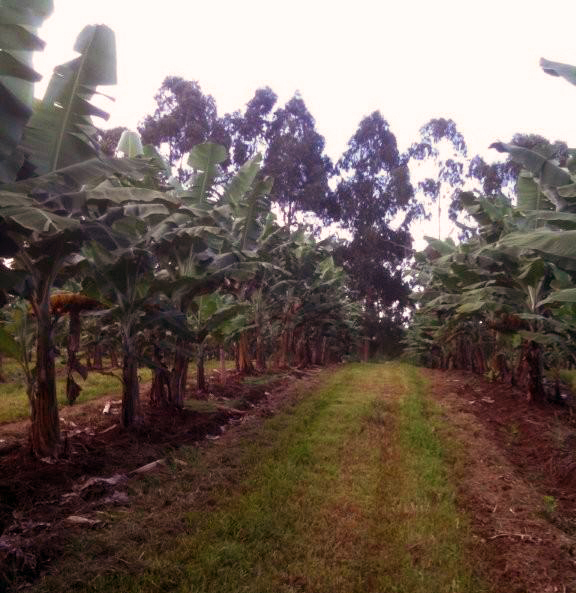Awhile back, the economy was booming and we were having a difficult time finding workers for the banana operation. We made a decision to get out of banana production. But when we announced our decision to our workers, they talked and then asked us if we would consider retaining the fields closest to the packing house. They said they would take care of the bananas. We were more than happy to work with them.
We agreed to maintain the fields close to the packing house and to eventually move the distant banana fields in closer. We started on a planting schedule to replace those distant fields with new ones located closer to the packing house. These are the first bananas from that new planting.
In the interim, and until our new bananas came into production, we decided to close our distant fields and supply our customers with Dole fruit. We have been planting Williams bananas steadily for eight months or so, and will soon have our own production to replace the Dole fruit. These days those distant fields are in sweet potato production.
We are not growing apple bananas; we rely on local apple banana farmers to supply what we need. We made the decision to grow Williams bananas because it takes an enormous amount of electric energy to ripen that type of banana. The hydroelectric facility we are building will save us a lot of money.
Every week we plant so many plants and then a year later we harvest so many bunches each week.



Thanks for the peek into the operations of such an enterprise. I grew up in farm country in the Midwest where, at the time, one of the big considerations was crop rotation. Is that an issue for you or can you keep growing the same crops? Also, I am surprised at the distance between banana plant rows.
Thanks, Richard.
Aloha Chuck
Banana can stay in one location for nearly 10 years. After that we will rotate with sweet potato, corn, etc before we come back with bananas again.
We get 140 inches of rain annually. The rain is free but we need to worry about getting stuck in mud. The wide spacing is so we can grow grass for traction. One benefit is that the bunches get larger.
Richard
I hadn’t thought about that…good reasoning behind the decision to space the rows…
Aloha Sonia:
When we first started, there were no large commercial banana operations on the Hilo/Hamakua coast. People told us that it could not be done because of the soggy soil. We were not convinced.
John Cross, when he was working for C Brewer, let me use 10 acres for one year to experiment. I tried different spacings and methods. What resulted was different from what was done at rocky Kea’au. But, it worked. And, we leased three hundred acres from C. Brewer. We always say, “what works, works”
Richard
Aloha Richard,
Have you ever considered planting double rows so that the wider spacing for tractors is only every other aisle?
Allen